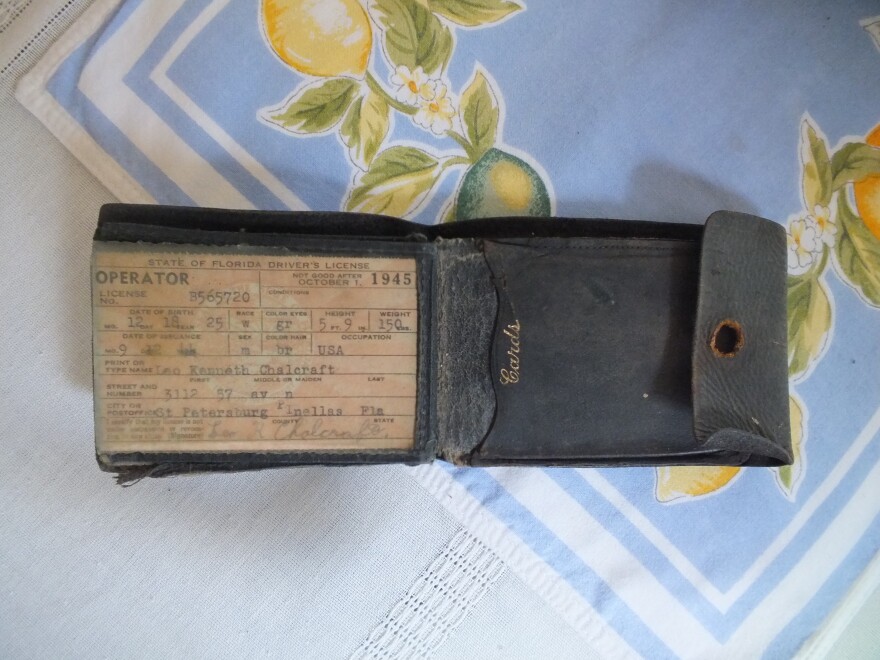The toughest writing assignment 16-year-old Konner Ross will have this year is to write a eulogy for a young man she’s never met. But there’s a part of him the Largo High School junior never forget – his green eyes.
“They have his wallet from when they found it on the beach and on his identification card, it says (he has) green eyes and brown hair,” Ross said. “I didn't know he had green eyes until then. So, that seems like something small, but it was really cool to learn for some reason.”
Ross is describing U.S. Army Private Leo K. Chalcraft, a St. Petersburg native drafted to serve in World War II. He drowned off the coast of France in 1944 on Christmas Eve, just weeks after turning 19.
“He was so young and I feel like he didn't get to experience a lot of his life because he was so young and was drafted.” Ross continued, “I want to, like, know him better.”
So, Ross is continuing her research, assisted by her Largo High history teacher Deborah Pettingill. The pair is one of 15 student-teacher teams selected nationwide to research a soldier from their home state who is buried at the American Cemetery in Normandy, France. It’s part of the National History Day - Normandy Sacrifice for Freedom Project.
For the past several months, Ross and Pettingill have been researching their soldier. They’ve gotten copies of his military and burial records and located Leo Chalcraft’s younger brother, Albert, who had become keeper of his older brother’s legacy.

“When their mother passed away, (Albert and his wife) had the artifacts and had his Purple Heart, and the flag from his coffin and the telegram that was sent when he passed away,” Pettingill said. They also had his wallet.
Pettingill said it is an honor to work alongside her student as part of the Normandy Project which requires rigorous effort with weekly readings, videos and online posting as well as research on their “Silent Hero.”
The pair will eventually create a website honoring Chalcraft using historical documents, photographs and other details uncovered during their study.
Their assignments will culminate in June with several days of research at the National Archives in Washington D.C., assisted by historians and staff from National History Day. They and the other 14 teams will then take an all-expenses paid trip to Normandy for a week where they will visit significant historic sites and Chalcraft’s grave at the Normandy American Cemetery.
Pettingill said.: “I myself have a son who's 19 as well, just the same age that Leo was killed. And so, as a mother, that in particular is very emotional.”

This is the sixth year for the project. Yet Cathy Gorn, executive director with National History Day, continues to be amazed by the power of the “Silent Hero” part of the project where the student writes and then reads eulogy - memorializing their service member.
“You’re standing in front of this grave, this bright, shiny marble cross, and there’s a 17-year-old boy struggling to read his eulogy because he’s crying. That’s when you know you’ve hit it,” Gorn said.
Gorn helped to develop the Normandy teacher and student program at the bequest of Albert H. Small – a WWII veteran.
“He believed that young people today don’t necessarily understand sacrifice and freedom and what we now call the greatest generation did in order to preserve that freedom,” Gorn said.
She believes the best way for the younger generation to understand that is not only to study the past, but feel and see the cliffs overlooking the beaches of Normandy.
“That the power of place and the power of geography is so important for students to understand,” added Lynne O’Hara, director of programming for the project. But she was a participating teacher for the first year.
And there’s the power of the individual stories of each of those who served, died and are buried at the Normandy American Cemetery like Leo Chalcraft. We’ll visit again with Ross and Pettingill as they prepare to memorialize their young soldier.




